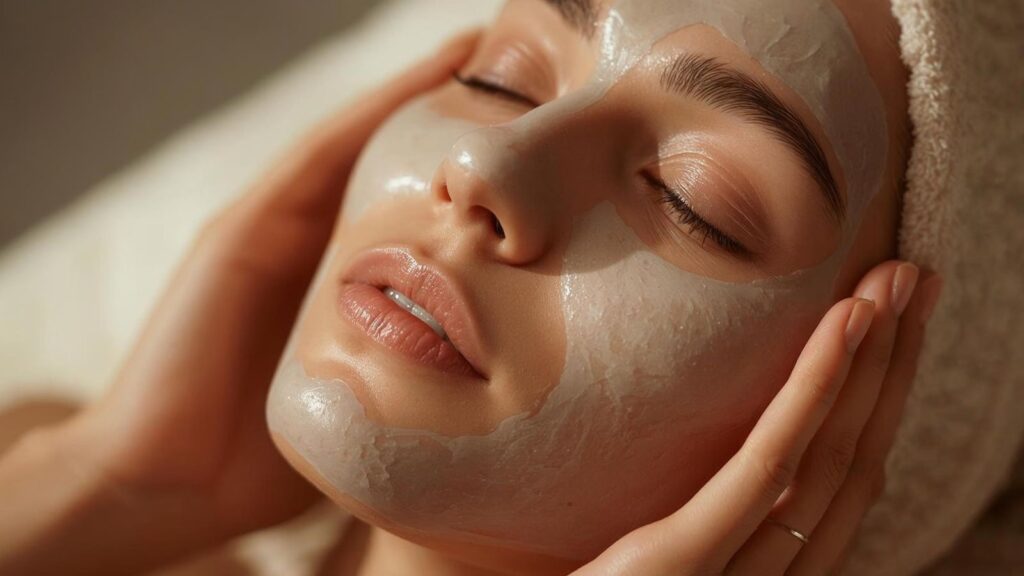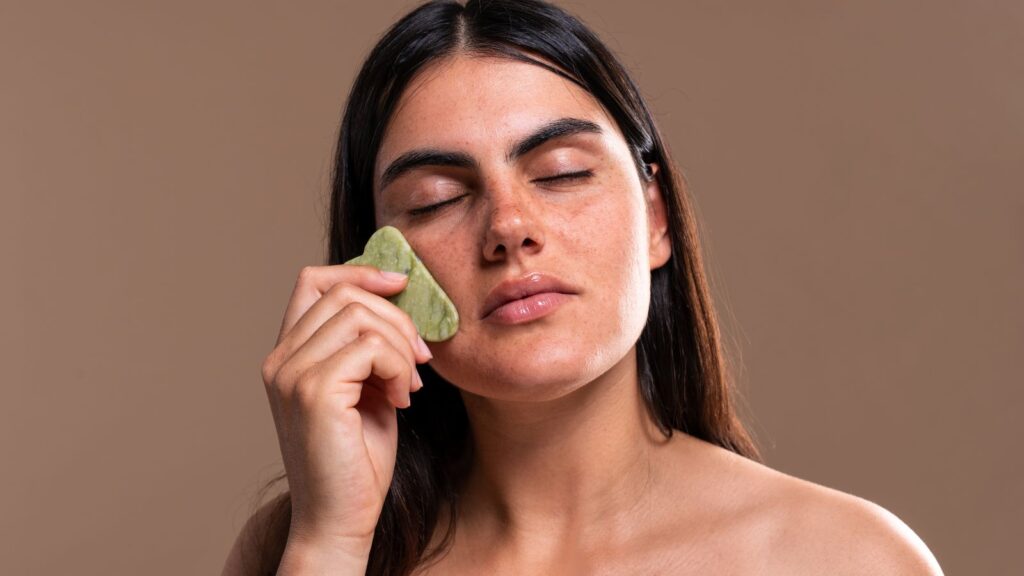Renewal as a universal pursuit
Every culture has looked for ways to stay fresh. To slow the visible effects of time. Whether through herbs, rituals, or modern science, the goal remains the same: keep the body and face aligned, balanced, alive. What’s fascinating is how the methods may differ yet aim for the same sense of restoration. The East leans toward balance and prevention. The West often focuses on precision and correction. Together, they form a complete picture of care — internal and external, patient and practical.
The starting point is awareness. Skin doesn’t exist on its own. It reacts to diet, sleep, hormones, and stress. Once those roots are steady, topical or procedural methods become more effective. People sometimes treat skincare like a race, layering products or chasing quick treatments. Real rejuvenation takes rhythm. It’s the steady combination of what you feed your body and what you apply to it. Every culture that values longevity understands that link, even if they express it differently.
Eastern traditions: steady rituals and balance
In many Eastern practices, rejuvenation isn’t a procedure. It’s a daily act woven into living. The skin is seen as part of an entire system. If energy flows well, the skin stays clear. When it’s blocked, dullness or breakouts appear. That’s why methods like acupuncture and gua sha remain relevant. They stimulate circulation and help the body release tension, not through force but through gentle repetition.
Ayurveda, the traditional Indian system, uses oils as carriers of nourishment. Sesame, coconut, and almond oil applied through slow massage aren’t meant to just soften skin. They calm the nervous system, which indirectly improves repair processes. The same goes for herbal teas made with ashwagandha or tulsi. They’re not cosmetics, but they reduce internal stress — and that shows on the face.
In Korea and Japan, skincare rituals grew out of a respect for purity and prevention. Multi-step routines may look like excess, but they come from layering moisture gradually. Each layer supports the next, much like how healthy habits build on each other. Cleansing is gentle; hydration constant. Ingredients like green tea, rice water, and fermented extracts appear often because they feed the skin microbiome while keeping the barrier strong.
Even food follows that principle. Warm soups instead of icy drinks, balanced spices, moderate seasoning. The goal isn’t quick detox but steady nourishment. Rejuvenation through regulation rather than shock. You see it in the way traditional medicine treats aging: it aims to preserve harmony rather than fight decline.
Western science: precision, ingredients, and technique
The Western approach developed through study and structure. Dermatology, chemistry, clinical testing. Instead of focusing on energy flow, it looks at measurable change. Peptides, retinoids, antioxidants, laser wavelengths — each chosen for a defined purpose. The focus lies on identifying cause and effect.
Chemical exfoliants such as glycolic acid or lactic acid work by encouraging the skin to renew faster. Retinoids influence how cells communicate, prompting smoother texture. These tools have reshaped what’s possible in skincare. They’re potent and efficient when used correctly. Yet they also require balance, something Eastern philosophy often reminds of. Overuse leads to irritation, which cancels out progress.
Procedures like microneedling, PRP therapy, and filler treatments continue that scientific path. They aim to restore volume and elasticity while keeping expression natural. Over the last decade, technology has refined how these treatments work — smaller molecules, gentler delivery, shorter downtime. Modern skincare bridges the gap between lab precision and the desire for subtlety.
Among the growing innovations, advanced Korean dermal fillers have gained recognition worldwide. They’re developed with focus on texture, integration, and hydration rather than extreme volume. This makes them ideal for people seeking softness without rigidity. Many clinics value their adaptability: different formulas for different layers of skin. It’s part of a broader movement that values natural expression while improving firmness and smoothness. The approach feels closer to wellness than cosmetic correction, reflecting a middle ground between East and West.
The Western side contributes clear structure: measurable doses, research-backed formulas, sterile procedures. When that precision meets the East’s long tradition of patient maintenance, results feel both controlled and lasting. It’s no longer about cultural contrast but complementing philosophies — routine meeting science.

Bridging habits: daily renewal that lasts
Rejuvenation doesn’t live in a clinic alone. It’s built every day. Start with the basics: water, nutrition, movement, rest. No culture disagrees on those. They decide how well your skin behaves before any treatment does. Dehydration, poor diet, erratic sleep — they all slow renewal. You can’t out-treat them with products.
Think of mornings as the checkpoint. A cup of warm water helps circulation wake up gently. Light stretching signals your nervous system that repair time is over, active time begins. Breakfast with protein and healthy fats steadies hormones and keeps inflammation low. That’s skincare before skincare.
At night, the same logic returns. The skin restores while you sleep, so rituals that calm the mind make a difference. A slow cleanse, soft towel, quiet room. No screens glaring back. Sleep is still the most universal rejuvenation method — free, accessible, always effective when you actually give it time.
Topical care benefits most when paired with these basics. Ingredients like hyaluronic acid, niacinamide, and peptides build structure, but only if the body has enough hydration and nutrients to support them. When you treat your skin like an organ instead of decoration, its needs become clear. Oil when it feels dry, lighter gels when humidity rises, gentle acids once or twice a week. The rule stays simple: help the skin do what it’s already designed for.
Eastern routines often emphasize touch. Western regimens focus on actives. Combine them. Take an extra minute to massage product in — circulation improves, tension drops. Let actives stay targeted, but never skip the grounding part. It reminds you that rejuvenation isn’t only chemical; it’s sensory.
Seasonal adjustment also matters. Cold air demands richer creams; humid heat calls for lighter layers. Herbs and teas used in Eastern wellness — like goji, ginseng, or ginger — pair well with Western supplements such as vitamin C or omega-3. The point isn’t adopting a foreign system entirely, but building your own rhythm using what works best from both sides.
The shared goal: longevity with ease
No matter the culture, the heart of rejuvenation sits in longevity. Skin that functions well ages well. Lines soften when tissue stays hydrated and resilient; complexion evens out when inflammation stays low. Science measures it; tradition observes it. The language may differ but the essence aligns.
Modern lifestyles often shorten patience. People want visible results fast. But genuine renewal asks for slower repetition. It’s not an aesthetic chase — it’s maintenance of function. The best results usually appear when habits are unforced. A little daily care outperforms sudden intensity.
Western medicine brings the data, the precision instruments, the controlled outcomes. Eastern philosophy adds steadiness, context, and intuition. When both combine, rejuvenation stops being an isolated event and becomes a lifestyle.
The face you care for today reflects what’s happening inside. Adjust your environment, mind your rest, nourish your body, treat your skin kindly. These practices aren’t opposites; they belong to the same path. And that’s the quiet secret of staying renewed: not transformation, but continuity.
